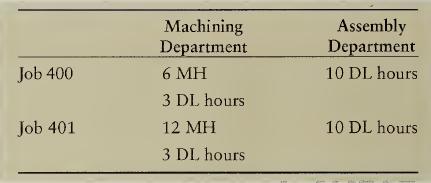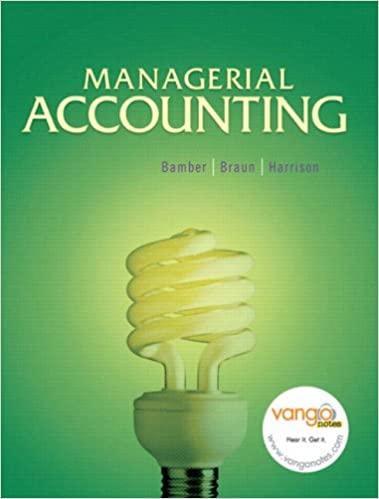Implementation and analysis of departmental rates (Learning Objective 1) Manns Garage Doors manufactures its products in two
Question:
Implementation and analysis of departmental rates (Learning Objective 1)
Manns Garage Doors manufactures its products in two separate departments: Machining and Assembly. Total manufacturing overhead costs for the year are bud¬ geted at $1,500,000. Of this amount, the Machining Department incurs $825,000 (primarily for machine operation and depreciation) while the Assembly Department incurs $675,000. Manns estimates that it will incur 6,600 machine hours (all in the Machining Department) and 20,000 direct labor hours (5,000 in the Machining Department and 15,000 in the Assembly Department) during the year.
Manns currently uses a plantwide overhead rate based on direct labor hours to allocate overhead. However, the company is considering refining its overhead alloca¬ tion system by using departmental overhead rates. The Machining Department would allocate its overhead using machine hours (MH), but the Assembly Department would allocate its overhead using direct labor (DL) hours.
The following chart shows the machine hours (MH) and direct labor (DL) hours incurred by Jobs 400 and 401 in each production department:

Both Jobs 400 and 401 used $1,200 of direct materials. Wages and benefits total $30 per direct labor hour. Manns prices its products at 140% of total manufacturing costs.
1. Compute Manns’ current plantwide overhead rate.
2. Compute refined departmental overhead rates.
3. Which job (Job 400 or Job 401) uses more of the company’s resources? Explain.
4. Compute the total amount of overhead allocated to each job if Manns uses its current plantwide overhead rate.
5. Compute the total amount of overhead allocated to each job if Manns uses departmental overhead rates.
6. Do both allocation systems accurately reflect the resources that each job used? Explain.
7. Compute the total manufacturing cost and sales price of each job using Manns’ current plantwide overhead rate.
8. Based on the current (plantwide) allocation system, how much profit did Manns think it earned on each job? Based on the departmental overhead rates and the sales price determined in Requirement 7, how much profit did it really earn on each job?
9. Compare and comment on the results you obtained in Requirements 7 and 8.
Step by Step Answer:

Managerial Accounting
ISBN: 9780138129712
1st Edition
Authors: Linda Smith Bamber, Karen Wilken Braun, Jr. Harrison, Walter T.





